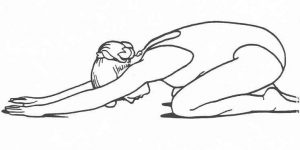I am sure you will agree with me that we don’t talk about depression in men, as much as we talk about other diseases, but you will be shocked to know that depression exists in the age group of 40-60 as in any other group in India. It can be anyone around you, your dad, your uncle, or elder brother or anyone around your circle or office. Allowing this to go untreated or unattended will do no good, if not harm otherwise.
Depression is not a sign of weakness and one doesn’t have to feel ashamed about it. At least this generation believes that there is no harm if “men cry”. The generation to which our dad’s belong, were brought up with the idea that “boys don’t cry”. A lot of us have been brought up with the notion that men are strong and in control of their emotions. When one feels let down, overwhelmed by despair, we often deny it or cover up with other emotions. It’s ok to feel low. Talk to someone. If you can’t, then please read some self-help techniques mentioned here.
To be honest, it is not a sign of failing masculinity or emotional weakness. It affects everyone from all ages and background, rich or poor, single or married or with partners. It’s perfectly normal to react to losses, setbacks and disappointments in life. It’s a momentary phase and people who cannot let go of this situation need help.
We have noticed that severe depression can be intense and unrelenting. It can impact the QOL (quality of life), productivity at work or home and create differences and disturbances in relationships, sleep, food pattern and overall daily routine. Often to identify people who are undergoing some form of depression, we look for symptoms. Some of the common ones are back pain, neck pain, frequent headaches, erratic sleep pattern, performance issues (sexual performance). It has been found that not many Indian men can handle depression compared to women and their chances of committing suicide are four times more than women.
The corporate sector has reported more cases of depression by middle aged employees. The reasons are many – lack of support system at workplace, lack of social circle due to over load of work, working in shifts, working in a particular environment not by passion but under various social and personal compulsion. Loss of job (sudden) or not finding the right job also adds to depression in middle aged men. In India, men switch jobs very frequently in private sector (may be every 3-5 years). The problem is not with switching jobs, but the real problem is not finding the right one. What do we mean by right job? May be the salary package is higher than previous one, but then one compromises on the quality of work and continues in a not so happy environment or another situation can be moving out of a job and then not getting any offers and if one gets something, then the offer is not attractive. This makes the middle aged Indian men more depressed and I would call this Corporate Depression.
In 2019, the frequency of job losses, job cuts and job switches are frequent in media and newspapers. However, the stigma associated with job loss is nowhere mentioned and left with the men to deal with. Its hard to tell if a person is depressed unless he or she breaks down in front of you or share their ordeal.
At the home front, loss of a dear one could trigger depression in middle men. While other factors could be loss of interest in marriage, divorce, lack of performance in bed, lack of communication with children and spouse adds to the woes. Indian men are assumed to be less expressive or may be the family doesn’t realise at times that there is something wrong with the “man of the house”. In such cases, the man of the house remains aloof, interacts less with the family members or friends, tries to remain in isolation and doesn’t enjoy company of his family members.
Another situation which is very common in India, where the man of the house doesn’t get chance to speak or express his opinion on domestic issues. In many situations, middle aged men are not considered to be part of household decisions especially at a time when they are switching from a full time job to retired phase. It takes time for men to adapt to the domestic environment which is more or less always dominated by the women of the house. Men are expected to share more domestic work load if they are not already, expected to limit their opinions to world matters or on the contrary expected to talk on domestic matters when they have never managed something similar while they were in active job life. This creates the fear of rejection, left out and the feeling of dejection. I would term this as Social Depression. Well this term does not exist in the Medical Dictionary, the closest you can co-relate is Social Anxiety Disorder or SAD.
While only a qualified medical professional can diagnose depression, there are certain major warning signs that many readers of this article or family members or office colleagues may notice. Loss of appetite, low mood, agitation, fatigue, difficulty in concentrating at work. However, substance abuse issues, medical problems or side effects or other health conditions may produce symptoms that may look similar to depression, hence corroborating the symptoms is necessary.
There are seven common types of depression – Major depressive disorder (MDD), Persistent Depressive Disorder, Bipolar Disorder, Postpartum Depression, Premenstrual Dysphoric Depression (PMDD), Seasonal Affective Disorder (SAD) and Atypical Depression. Indian men are more prone to MDD, PDD and Atypical. Lets understand some of the common symptoms which can help you identify friends, relatives and family members who might be suffering from one or the other depression.
Major Depressive Disorder (MDD)
Persistent Depressive Disorder (PDD)
Atypical Depression
Apart from the above depression can be clinical or psychotic or mood disorder and I am not an expert. I can tell you how to tackle such as situation.
Lets talk. Medicines are helpful, but what else? Are there natural remedies or methods. Lets try some easy methods.
- Yoga – There are poses that can control the anxiety and help you control your emotions in a better way.
- Change Your Diet Plan/ Food Habits
With the right exercise comes the need of a correct diet plan. Here are some food that can improve your mood, well-being and help you take care of anxiety and depression.
a. Walnuts: Rich in Mood-Boosting Omega-3 Fatty Acids
A study published in the British Journal of Psychiatry has explored if walnuts can help patients with mood swings. In Indian context, walnuts can be considered as an in between snack or evening snack. For salad lovers it can be considered as part of their salads.
b. Tomato: Packed with Depression fighting boosters
Tomatoes are known to contain folic acid and alpha-lipoic acid, both of which are good for fighting depression and also suitable for Indian diets. Please include tomatoes as part of the main course, salads and soups.
c. Other ingredients include:
Beta-carotene: apricots, broccoli, carrots, peaches, pumpkin, spinach, sweet potato
Vitamin C: blueberries, broccoli, grapefruit, kiwi, oranges, peppers, potatoes, strawberries
Vitamin E: nuts, vegetable oils, wheat germ
Food or diet plan varies from person, type of depression, digestive system and many other factors. Before exploring the internet for various diet plan for yourself or loved ones, please consult a dietitian or a physician for final word. There are certain food that can harm your body and should be avoided. Write to me to get customised solutions.
If you would like to share your story on how you tackled depression (self or any friend or family) please write to us
- Everyone knows how to love, but only FEW know how to love forever - February 13, 2020
- A flower cannot blossom without sunshine, neither can a man live healthy without Vitamin D - January 8, 2020
- “Eat healthy, sleep well, breathe deeply, live harmoniously.” - December 30, 2019

 One minute pose is good way to start and slowly stretch it to 3-5 minutes. If you are not comfortable due to stiffness in your neck or it’s difficult to reach the floor, support the forehead with a blanket or a cushion. Bring your attention to the breath: Is it distorted by the compression of the abdomen?
One minute pose is good way to start and slowly stretch it to 3-5 minutes. If you are not comfortable due to stiffness in your neck or it’s difficult to reach the floor, support the forehead with a blanket or a cushion. Bring your attention to the breath: Is it distorted by the compression of the abdomen? This asana works for people with endocrine disorder or thyroid. This asana is not for beginners, you are advised to do this pose under supervision of an expert. Start with lying on the floor in a supine position, with the arms alongside the body and palms facing down and then slowly bend the knees and kick and rock the legs up and back, bringing the bent knees to the forehead and while inhaling place your hands under the hips. Slowly, as you exhale, you can straighten the knees to attain the proper posture. Keep your torso perpendicular to the floor and your legs fully extended. In case you find this difficult, use blanket for support. Inhale, draw your chin away from your sternum and slowly open up the shoulders and throw your weight on the ground with the upper arms to create lift. You may try to achieve chin lock and interlace the fingers behind your back and gently squeeze the shoulder blades together. Maintain the position and your breathing for 4-10 counts depending on your level of comfort. Finally, exhale as you slowly and easily retrieve your legs from behind your back and place them perpendicular to the mat. Return to supine position once again.
This asana works for people with endocrine disorder or thyroid. This asana is not for beginners, you are advised to do this pose under supervision of an expert. Start with lying on the floor in a supine position, with the arms alongside the body and palms facing down and then slowly bend the knees and kick and rock the legs up and back, bringing the bent knees to the forehead and while inhaling place your hands under the hips. Slowly, as you exhale, you can straighten the knees to attain the proper posture. Keep your torso perpendicular to the floor and your legs fully extended. In case you find this difficult, use blanket for support. Inhale, draw your chin away from your sternum and slowly open up the shoulders and throw your weight on the ground with the upper arms to create lift. You may try to achieve chin lock and interlace the fingers behind your back and gently squeeze the shoulder blades together. Maintain the position and your breathing for 4-10 counts depending on your level of comfort. Finally, exhale as you slowly and easily retrieve your legs from behind your back and place them perpendicular to the mat. Return to supine position once again.


 Please wait...
Please wait...